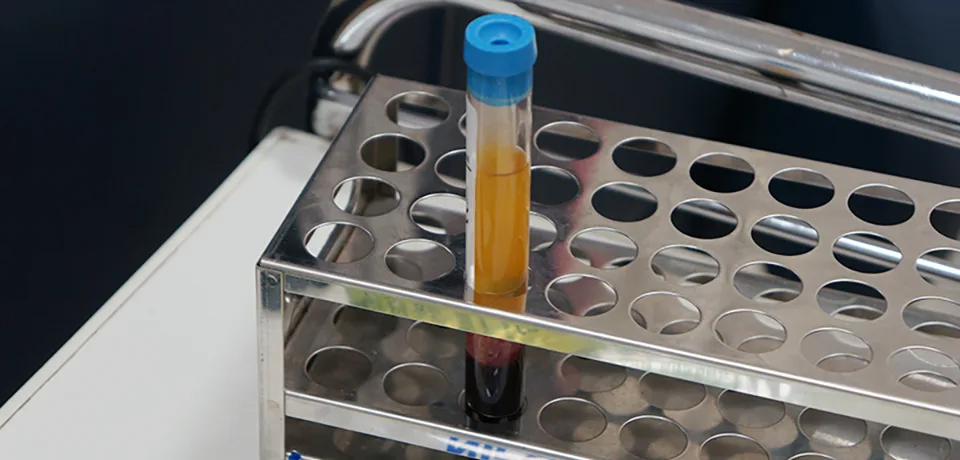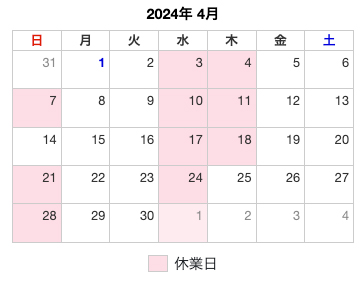Chelation therapy 2
Chelation therapy
Anti-aging therapy that uses methods to remove harmful minerals and waste products from the body
This treatment uses blood plasma, which contains a large amount of platelets.
This therapeutic material is made by extracting platelets from the patient's own blood.
It is a recovery medicine that aims to cure by using the tissue repair ability of the growth factor of platelets contained in blood to enhance the intrinsic healing power. It is a treatment with very few side effects because it uses its own blood.
title
title
title
What is chelation?
Remove harmful minerals and waste from inside
 Chelation therapyis an anti-aging therapy that uses a method to remove harmful minerals and waste products from the body.Minerals are thought to be necessary for the body, but some are harmful to the body.
Chelation therapyis an anti-aging therapy that uses a method to remove harmful minerals and waste products from the body.Minerals are thought to be necessary for the body, but some are harmful to the body.
These include cadmium, mercury, lead, arsenic, and aluminum.
We are gradually accumulating these harmful heavy metals in our bodies, either by eating fish or by exhaust gases and cigarette smoke.
These harmful heavy metals are large in particle size and are not easily discharged naturally by body excrement such as sweat. It is effective for the discharge,Chelation therapy.
The origin of chelate is crab scissors. Chelating agents are drugs that bind heavy metals in a way that crabs pinch things with scissors,Chelation By instilling the agent, harmful heavy metals are discharged outside the body.
in Japan,ChelationWas not very popular other than being used as an antidote to lead poisoning by painters who poisoned with zinc contained in paints and those working in mines. Chelation therapy is expected to prevent the onset of sclerosis and anti-aging medicine.
Chelation therapy
In addition to a chelating agent called Ca-EDTA, it is infused about 100ml containing various vitamins.
Meanwhile, about 30 minutes.
To get an effect, 1-2 times a week, with a frequency of 10-20 times a week.
After that, the condition is maintained with 1-2 therapy per month.
List of lesions for which chelation therapy is effective and improvement of expected symptoms
 Arteriosclerosis / Cardio-coronary disease / Peripheral vascular disease / Arthritis / Multiple sclerosis / Parkinson's disease / Alzheimer's disease Visual / auditory / olfactory disturbance / Increased collateral circulation / Decreased blood viscosity (blood stickiness) / Cell membrane Improvement of function / Improvement of function of intracellular organs / Reduction of arterial spasm / Reduction of free radical production / Suppression of aging / Reduction of angina / Improvement of gangrene / Improvement of skin color / Improvement of diabetic ulcer / Improvement of muscle exercise / Recovery of energy
Arteriosclerosis / Cardio-coronary disease / Peripheral vascular disease / Arthritis / Multiple sclerosis / Parkinson's disease / Alzheimer's disease Visual / auditory / olfactory disturbance / Increased collateral circulation / Decreased blood viscosity (blood stickiness) / Cell membrane Improvement of function / Improvement of function of intracellular organs / Reduction of arterial spasm / Reduction of free radical production / Suppression of aging / Reduction of angina / Improvement of gangrene / Improvement of skin color / Improvement of diabetic ulcer / Improvement of muscle exercise / Recovery of energy
Intravenous infusion is a doctor's treatment.
If there are risk factors such as vascular disease or significant accumulation of harmful metals, we will introduce facilities.
| | Pollution source | Symptoms of excess accumulation Carcinogenicity | Minerals and vitamins that promote excretion |
|---|
mercury
(Hg) | Seafood, dental amalgam, softener, fungicide | Depression, emotional instability, atopic dermatitis, weak muscle paralysis, loss of appetite
Carcinogenicity: None | Calcium, Iron, Selenium, Zinc, Magnesium, Vitamin A / C / E |
|---|
lead
(Pb) | Tap water exhaust gas with lead pipe, soil, paint, insecticide, dry battery, tobacco | Decreased immune function Kidney / liver disorder, anemia atherosclerosis, neuropathic emotional instability
Carcinogenicity: Yes | Calcium, iron, selenium, zinc, vitamin C / E |
|---|
arsenic
(As) | Soil, pesticide residue, pesticide, exhaust gas | Skin disorders, general fatigue, hearing, respiratory problems, cardiac dysfunction, hypertension, neuritis
Carcinogenicity: Yes | Calcium, iron, selenium, zinc, magnesium, vitamin C |
|---|
cadmium
(CD) | Tobacco sidestream exhaust, daily smoke, contaminated food, drinking water | Itai Itai disease Rheumatoid arthritis Nervous hypersensitivity, hypertension hair loss, anemia, emphysema, kidney / liver disorders
Carcinogenicity: Yes | Calcium, iron, selenium, zinc, copper, vitamin B1 ・ C ・ E |
|---|
aluminum
(To the) | Cooking utensils, tableware, aluminum cans, aluminum foil, tobacco water treatment agents, pesticide digesters, exhaust gas | Gastrointestinal disorder, emotional instability, Alzheimer, dementia, rickets, loss of appetite, Parkinson's disease
Carcinogenicity: None | Magnesium, calcium, vitamin B6 |
|---|
beryllium
(Be) | Air pollution, electronic components, reactor materials | Respiratory distress, shortness of breath, cough throat, weakness
Carcinogenicity: Yes | Corresponds to hazardous air pollutants in the Air Pollution Control Act amended in 1991 |
|---|
Contraindications of chelation therapy
As a general rule, patients with impaired kidney function, arrhythmia, heart disease, and elderly people over 65 are not given chelation therapy.
Of chelation
Concept and policy
There are pros and cons regarding the effects and risks of chelation treatment.
Physicians who promote and disagree with domestic academic societies have conflicting opinions.
Overseas, the effects of chelation and safety have been established, but only within the scope of careful consideration.
This clinic has also carefully considered the introduction of chelation, but it is a policy that is targeted only to patients who can be considered for indication.
As a general rule, elderly patients, patients with unstable blood pressure, patients with cardiovascular risk, and patients who only want chelation without being tested are not allowed.
From the risk standpoint, there is doubt about the aggressive treatment of patients with advanced arteriosclerosis.
For this reason, please understand that there are many patients who are not indicated in this hospital.
There are clinics that do cheating with the idea that everything is the target of treatment for the purpose of detoxing, but there is a clear risk and it should be done carefully.
We have adopted the Ca-EDTA chelation that has been confirmed in the hospital that there has been no death in the world.
However, even this drug is not without the possibility of causing a sudden drop in shock or blood pressure, and it must be done carefully and slowly under the control of a doctor.
In fact, there are cases where an elderly doctor who received a rapid injection of a drug at a chelation seminar shocked.
Infusion at high concentration is not performed from the beginning.
Before chelation, we carefully obtain physical information such as blood pressure measurement, blood function analysis, and general examination.
Blood function analysis can be used to determine whether or not heavy metal contamination is present in the body due to coagulated blood.
It is recommended that you accept the risk of chelation with sufficient understanding.
Due to the detox effect, injection of α-lipoic acid has little risk and is considered safer and simpler than chelation.




 Chelation therapyis an anti-aging therapy that uses a method to remove harmful minerals and waste products from the body.Minerals are thought to be necessary for the body, but some are harmful to the body.
Chelation therapyis an anti-aging therapy that uses a method to remove harmful minerals and waste products from the body.Minerals are thought to be necessary for the body, but some are harmful to the body. Arteriosclerosis / Cardio-coronary disease / Peripheral vascular disease / Arthritis / Multiple sclerosis / Parkinson's disease / Alzheimer's disease Visual / auditory / olfactory disturbance / Increased collateral circulation / Decreased blood viscosity (blood stickiness) / Cell membrane Improvement of function / Improvement of function of intracellular organs / Reduction of arterial spasm / Reduction of free radical production / Suppression of aging / Reduction of angina / Improvement of gangrene / Improvement of skin color / Improvement of diabetic ulcer / Improvement of muscle exercise / Recovery of energy
Arteriosclerosis / Cardio-coronary disease / Peripheral vascular disease / Arthritis / Multiple sclerosis / Parkinson's disease / Alzheimer's disease Visual / auditory / olfactory disturbance / Increased collateral circulation / Decreased blood viscosity (blood stickiness) / Cell membrane Improvement of function / Improvement of function of intracellular organs / Reduction of arterial spasm / Reduction of free radical production / Suppression of aging / Reduction of angina / Improvement of gangrene / Improvement of skin color / Improvement of diabetic ulcer / Improvement of muscle exercise / Recovery of energy

